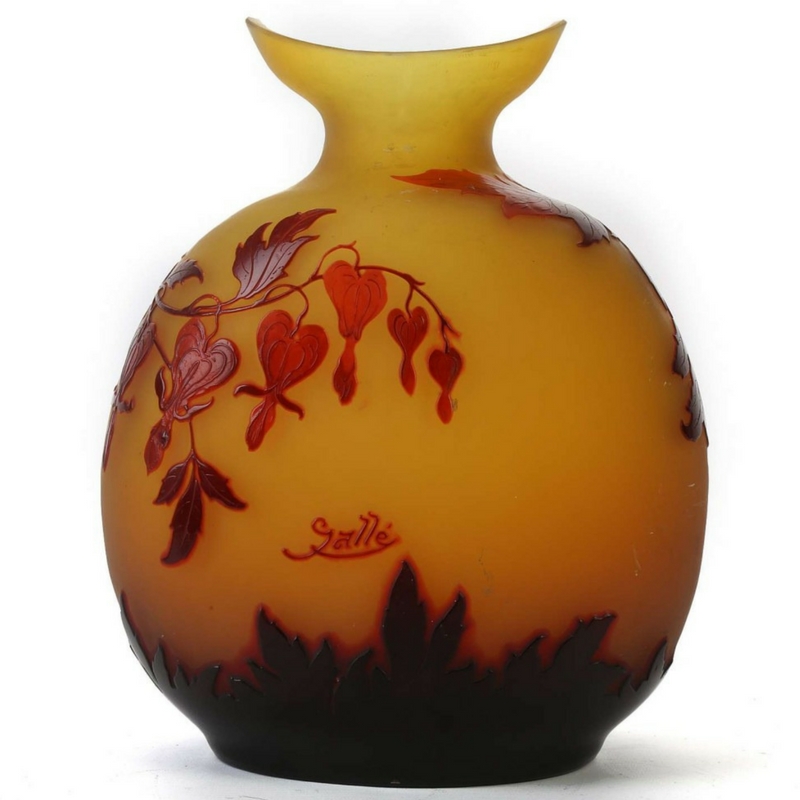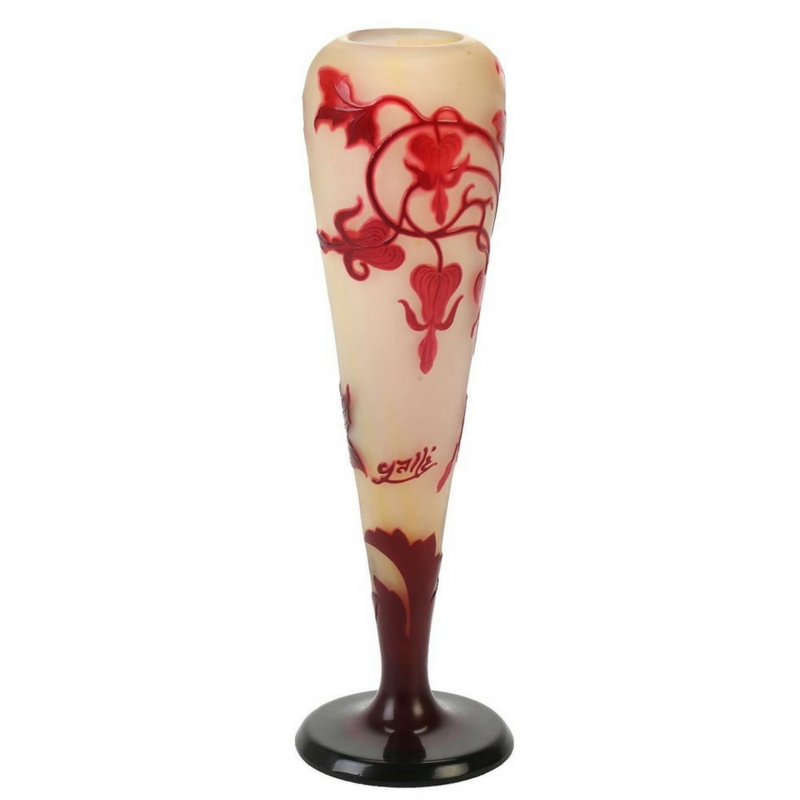Collector’s Guide: Gallé Glass
Ahead of the 20th Century & Contemporary Art & Design auction on 17 October, Head of Department James Nurse delves into the world of Gallé glass and shares expert insight into factors to consider when buying at auction. Emile Gallé was born in Nancy, France in 1846. Gallé’s pioneering techniques established his reputation as the predominant glassmaker of the late 19th and early 20th century. The vibrant and rich colours, elegant decoration and Art Nouveau motifs that characterise Gallé glass remain the much-loved aspects for collector's today.
Lot 1. Tall cameo glass vase, circa 1900. Estimate: £800 - £1200.
Gallé was directly involved in the technical and design aspects of his company and although the glassmaker employed a number of craftsmen who were less well-known, this does not affect the value of pieces. The main distinction to make when buying Gallé is to recognise the rare, hand-modelled pieces produced by the glassmaker’s company and the works produced in larger quantities.
Following his death in 1904, the company continued to manufacture pieces under the direction of Victor Prouvé. Some works produced after the glassmaker’s death are marked with a star beside his signature. During the mid-1920’s, the company launched its highly sought-after mould-blown cameo glass lamps and vases. Sadly, the factory closed in 1936, following its gradual decline after the war.
Lot 2. Large cameo glass vase, circa 1900. Estimate: £800 - £1200.
The pieces offered in the forthcoming sale are high quality, authentic examples with a strong provenance. Size, shape and the quality of the etching are the most important factors to consider when determining value.
'Ultimately, an attractive and good quality piece of Gallé glass will be popular amongst collectors, but a notable history will demand higher value.' - James Nurse

Lot 3. Cameo glass vase, circa 1900. Estimate: £300 - £500.
The most obvious ways to spot Gallé copies is by looking at the quality of the decoration. Furthermore, a piece with a base that is particularly flat or smooth may raise a red flag.
‘Condition is fundamental; pieces in good condition will always be sought after and this will reflect in the price achieved. Familiarise yourself with restored pieces. Ask a specialist who will be able to give guidance. The more you handle Gallé pieces, the more trained your eye will become to quality and inferior imitations. ’ – James Nurse
Gallé Glass remains a flourishing market with a consistent and international interest. Pieces can fetch anything from $500 to $100,000; a good way to start is to look out for the smaller objects produced in larger quantities. If you are using Gallé glass in your home, bear in mind that you should regularly clean the piece with soapy water. If you have a Gallé table lamp, it is advisable to use only low-wattage bulbs to avoid cracking the glass. One of the top public collections of Gallé glass and ceramics is in the Musée de l’École de Nancy.
20th Century & Contemporary Art & Design - 17 October